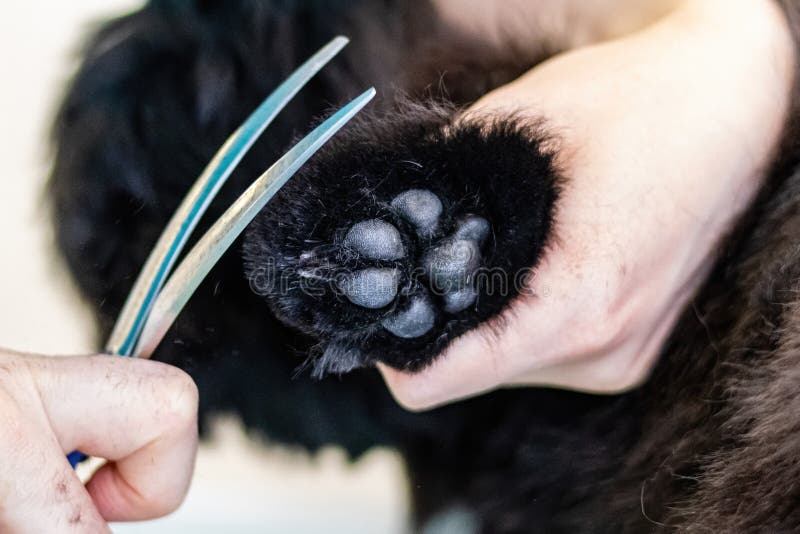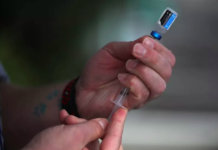Last Updated on February 13, 2024 by Fumipets
Caring for Your Dog’s Paw Pads: A Guide to Happy and Healthy Paws
Our furry companions’ well-being extends beyond just feeding and grooming; it involves paying attention to the often-overlooked details, such as their paw pads. A dog’s paw pads are crucial for their mobility and comfort, and ensuring they are properly cared for is an essential part of responsible pet ownership.
In this guide, we will explore the best practices for maintaining your dog’s paw pads, helping you keep those paws healthy, happy, and ready for any adventure.
Caring for Your Dog’s Paw Pads
Let’s talk about paw pads for today. Dogs may have blisters or torn paw pads, burned paws from walking on overly hot pavement, or matting between their toes, so foot care is just as vital for them as it is for us humans. Ouch!
Mats between their toes may cause walking difficulties or a range of skin issues if your dog licks them. Injured paw pads make walking unpleasant and can get infected, and mats between their toes can cause walking problems or a variety of skin issues if your dog licks them.
Beyond ensuring sure your dog’s nails are cut, it’s important to properly care for your dog’s feet, and it’s rather easy!
What Are Paw Pads?
A layer of pigmented skin, typically pink or black, covers fatty tissue in the paw pads. Because fat insulates, they provide some protection for your dog’s paws against chilly surfaces in the winter.
They’re also an important aspect of your dog’s foot structure, working in tandem with his nails (which provide protection for the pads). Paw pads aid in your dog’s balance as well as providing traction, stability, and shock absorption.
Your dog’s paw pads may be rough and calloused or smooth and soft, depending on the terrain your dog walks on on a frequent basis. Due to the exposure to tougher terrain, if you take your dog trekking often or take them for regular walks on asphalt, their paw pads will get calloused.
Your dog’s paw pads are likely to be smoother if he or she is older and doesn’t walk as much or spends most of their outdoor time running about on grass (and more likely to tear when they do walk on rougher surfaces).
If you intend on taking your dog on regular treks or know they’ll be walking on tougher surfaces throughout their lives, you may help them develop calluses by gradually exposing them to rough surfaces. Begin by using these surfaces for shorter lengths of time to allow the pad to develop toughness over time.

Maintenance and Care of Paw Pads
Make a practice of inspecting your dog’s paw pads on a regular basis. Gently stretch their toes apart and look for any injuries or foreign items on the sides of their paw pads and between their toes (like burrs, pebbles, or dangerous foxtails). Check for any swelling or discolouration while you’re at it. When inspecting your dog’s foot, keep an eye out for any symptoms of discomfort or soreness.
Avoid Taking Your Dog for a Walk on a Hot Pavement
The paw pads of your dog might be burned by hot pavement or asphalt. Place the back of your hand flat on the pavement and attempt to keep it there for seven seconds to test whether the ground is too hot for your dog to walk on. It’s too hot for your dog to walk on if it’s too hot for you to keep it there for the whole time! It’s probably too hot for a dog walk or other outside activities if the pavement is so heated.
During hot weather, keep your dog’s potty trips short, try to walk him on grass and in the shade, and have plenty of cold, fresh water on hand for periodic rehydration.

How to Care for Your Dog’s Paws in the Winter
With snow, ice, and salt, winter can be tough on your dog’s paw pads. No ice-melt product is fully safe for your dog, and many may dry out, crack, or even burn your dog’s paw pads, as well as be poisonous if your dog licks it off their paws. If at all possible, avoid walking them on salt-treated sidewalks. If you need to de-ice your driveway or sidewalk, go here to learn more about which ice melters are safest for your pet.
Keep the hair between your dog’s toes clipped on their paw pads. They won’t be as likely to accumulate paw “snowballs” between their toes this way. Snow and ice are coated in dog hair, melt from their body heat, and then refreeze to produce these snowballs. Snowballs on your dog’s paws and legs may cause a lot of pain and suffering because they tug on the fur and force the toes apart. Our cordless trimmer recommendation, which many groomers use, is listed below.
During the winter, make your dog wear booties outdoors. Apply paw wax before going outdoors in the snow or ice if they don’t tolerate footwear. Check out my top dog boot selections, which include disposable alternatives, further down.
After each journey outdoors, wash and dry your dog’s paws, particularly if they’ve been walking on salt-treated surfaces. If your dog’s paws have accumulated snowballs, apply paw wax to melt the ice between their toes before washing with warm water. A portable paw washer, such as the Dexas Mudbuster, will help you wash your dog’s paws quickly and easily while minimizing the mess!

Protect Your Dog’s Paws with Paw Wax
Paw pad waxes are a simple method to protect your dog’s paws, and they’re a fantastic alternative if your dog won’t wear booties or you can’t locate one that stays on. Musher’s Secret (originally made for working sled dogs) paw pad wax is simple to apply and moisturizes your dog’s paw pad, forming a barrier surrounding your dog’s foot that repels ice, salt, and grime, as well as helping to protect your dog’s paw pad from burns. Consider it a boot that isn’t visible! Just before they go outdoors, apply to their paws.
Is It Necessary to Moisturize Your Dog’s Paws?
If your dog’s paw pads are cracked, peeling, or overly dry, you should moisturize them. Stick to products created exclusively for canine paws and avoid using human lotions or moisturizers. If your dog’s paw pads are already soft, hydrating them might make them more prone to tearing or ripping when they tread on hard surfaces.
Keeping Your Dog’s Paw Pads Trimmed and Mat-Free
Shortening the fur or hair that develops between your dog’s paw pads will help keep their feet healthy and give extra grip on slick terrain.
It’s simpler to check and clean their feet when their paw pads are clipped, and it minimizes ice from forming between their toes during snowy weather. It also prevents matting between your dog’s toes, which may be unpleasant and drive them to gnaw on their feet (which leads to hot spots and other skin issues). Some dogs don’t have much hair on the bottoms of their feet, but medium to thick-coated dogs have fuzzy feet that can be trimmed.
Using grooming clippers, you can easily cut your dog’s paw pads at home! For paw pad trims (and even hygienic – nicknamed “poop chute” – trims if your dog need them), I personally suggest the Wahl Bravura clippers. It’s simple to use since it’s cordless, and it includes a 5-in-1 blade with several length possibilities. For paw pad trimming, the #10 length setting is ideal.

Protect Your Dog’s Paws with Dog Boots
Whether it’s from tearing a paw pad during excessive running and play, cutting a pad while hiking, ice build-up between their pads, or scorching and blistering from walking on hot surfaces, a paw pad injury may be quite unpleasant for your dog. Wearing booties while your dog is involved in activities or in surroundings that might harm their pads is the greatest approach to protect their pads from wear and strain. For your dog, look for a boot that is robust, well-fitting, and non-slip.
These PawZ dog boots are fantastic disposable dog booties that protect elderly canines from scorching pavement, rain, snow, and environmental allergies while also providing traction. They come in a number of sizes (including a “small” version for teacup dogs or puppy feet!) and in 12-packs. Before discarding, each boot may be used numerous times.
Problems with Dog Paws
Smelly Paws
For a number of reasons, dog paws may smell. They have sweat glands in their paw pads that help them stay cool in hot weather, as well as smell glands that let them leave behind pheromones that alert others to their presence (which is why many dogs scrape their feet on the grass or kick the dirt after going to the bathroom).
More typically, people complain about their dog’s feet smelling like corn chips (although some find it curiously comfortable). Bacteria or yeast on your dog’s feet, generally between their toes and paw pads, causes this odor. Inspect your dog’s toes, between the paw pads, and the base of the nail bed if you sense an odor. Nails that are infected might be brittle, uneven, or mushy. Discoloration and a “film” over the nail, as well as mild to severe edema near the nail bed, are possible symptoms.
Yeast and bacteria on your dog’s paws are common, and his immune system works hard to keep them under control. If your dog’s paws smell like Fritos or their nails seem diseased, see your veterinarian find out what’s causing the illness and how to cure it. Food or environmental sensitivities may sometimes trigger these illnesses. To avoid an overabundance of yeast and germs between your dog’s toes, be sure to clean and dry their paws completely after they go outdoors.

Hyperkeratosis
Is the skin on your dog’s paw pads tough, thick, or crusty? Is it possible that they have hair sprouting from their paw pads? This is known as canine hyperkeratosis, and it may be seen on their paw pads or snout. Because hyperkeratosis may be hereditary or the consequence of a medical issue, it’s important to see your veterinarian if you discover it. In the meanwhile, paw pad balm may be used to keep your dog’s paws moisturized and protected, reducing pain.
Q&A: How to Properly Care for Your Dog’s Paw Pads
Why are paw pads important for dogs?
Paw pads serve as a protective layer, providing insulation against extreme temperatures, preventing injuries, and offering traction. Proper care ensures your dog’s overall well-being.
How often should I check my dog’s paw pads?
Regular checks are essential, especially after outdoor activities. Inspect for cuts, cracks, or foreign objects lodged between the pads. Daily checks during extreme weather conditions are recommended.
What is the best way to clean paw pads?
Gently clean your dog’s paw pads with a damp cloth to remove dirt and debris. Be cautious with any potential irritants, and thoroughly dry the paws afterward to prevent infections.
Can I use moisturizers on my dog’s paw pads?
Yes, but opt for pet-safe moisturizers to prevent irritation. Apply sparingly to keep the pads supple, especially in dry or harsh weather conditions.
How can I protect my dog’s paw pads in different seasons?
In summer, avoid hot surfaces, and in winter, protect against cold and ice. Consider dog booties for extra insulation, and use paw balms to shield against harsh weather conditions.


















